Art Encounters Biennial blows through Herta Müller’s Romanian heartland
Curators Maria Lind and Anca Rujoiu join forces to explore artists’ unexpected connections with the cultural and urban identity of Timișoara for the third edition of the Romanian festival
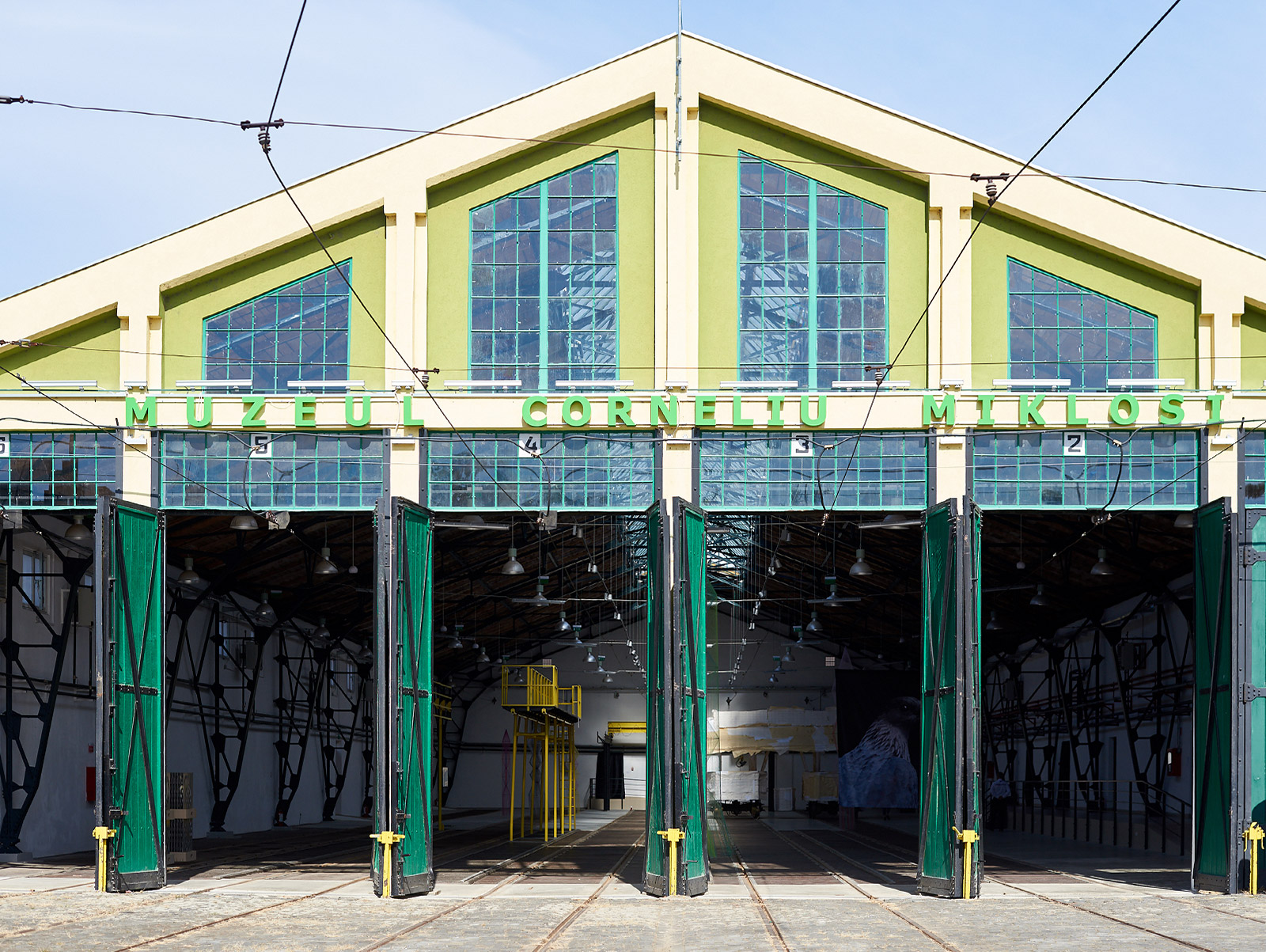
When Romania’s most cosmopolitan city is staging its third biennial, it seems no one has escaped the furore. One young taxi driver reveals genuine dismay for his sculpture escaping the curators’ programme, and determined to make the next run.
The justly named City of the Revolution, Timișoara has never shied away from cultural ambition, laying claims to the country’s only non-communist curriculum, the only Bauhaus education system, and vibrant 1970s art scene. In 2021 it will be the European Capital of Culture. ‘And still,’ laughs Oliviu Sandor, president of the Art Encounters Foundation, ‘contemporary discourse is taking some getting used to.’
The city historic centre – a trio of squares linked by crumbling secessionist architecture – houses the mainstay of the exhibition programme: 30 sites in all accommodating 60 artists (of who 20 present new commissions). Critically, Art Encounters is not in transformation but ‘opening up’ spaces for art.
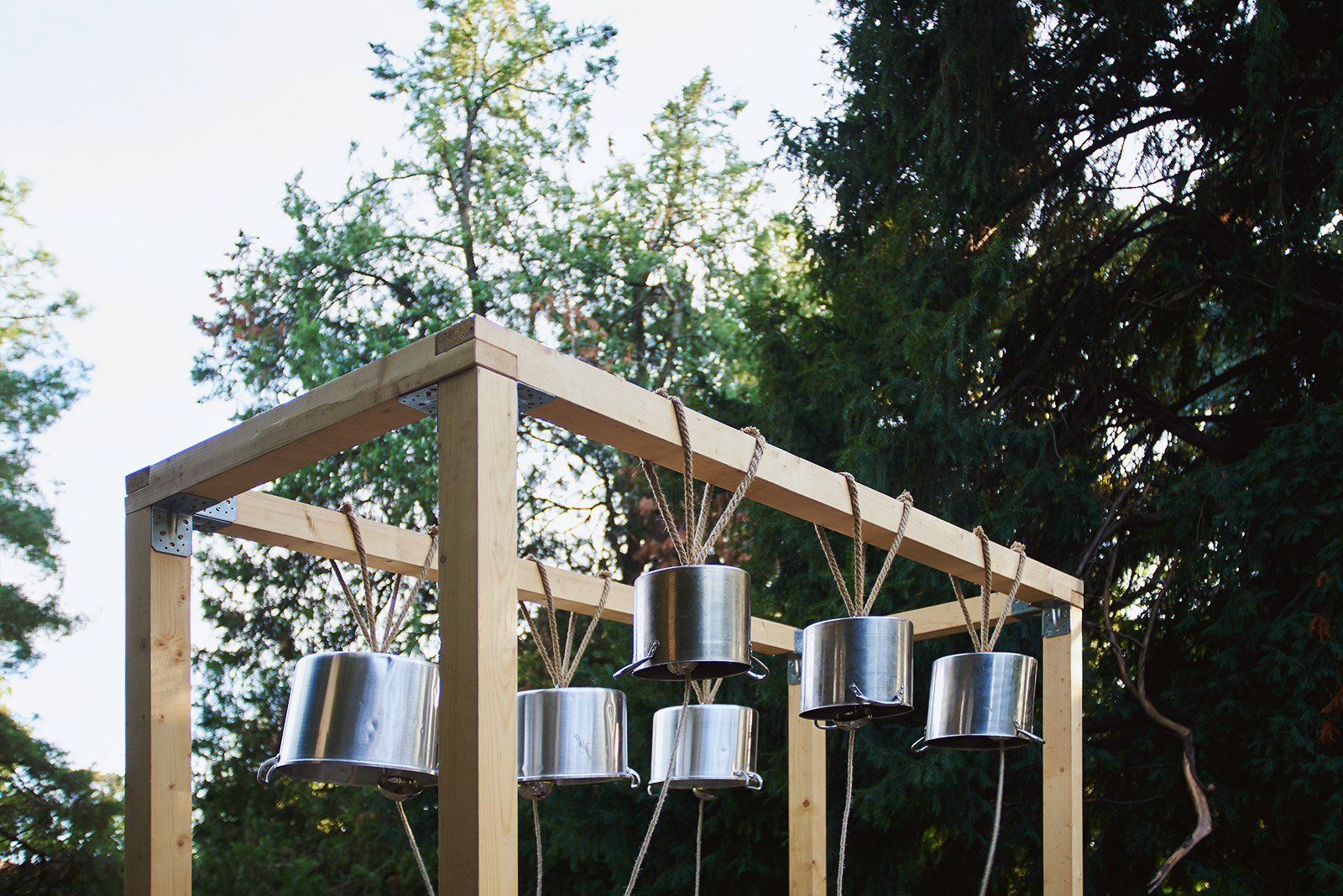
A bricolage interactive installation of six large kitchen pots, fitted with bells, by artistic duo Monotremu at Timișoara’s Botanic Park.
‘We don’t want to be at the forefront of gentrification,’ assert curators Maria Lind and Anca Rujoiu. As such, the necessary oomph for this pre-existing infrastructure rises from the curators’ biennial ‘winds’: a set of thematic weather fronts spanning sustainability, craft, agility, reliance and borders, to name a few.
Under the breezy rafters of a tram depot (Corneliu Miklosi Public Transport Museum), Agnieszka Polska’s majestic Wayward Pigeon confidently asserts its borders badge while also announcing itself as the biennial mascot – here as large-scale digital print and poster-child for the contrarian messenger.
Shimmering alongside, Bella Rune’s five suspended yarn sculptures – as if blown over from Sweden on a whisper, in all their delicacy. Collapsible, unstable, they stand to provoke the nature of sculpture itself and are unafraid of being decorative. ‘There is something about purple in this city,’ Dune insists, taking inspiration for her mushroom-dyed mohair-silk threads from the lilac hues of Timișoara itself.

Installation view of Ciprian Mureșan’s ‘Plague Collumn’ at Eric Hussenot Gallery, Paris, 2016. Courtesy of the artist
The city itself is again protagonist in a series of ‘reserve graffiti’ botanical patterns by Gunilla Klingberg (Spirit of the Woods, 2019), power-hosed onto pavements as a salute to a process of erasure. From overlooked tarmac to the bi-product of weaving – with Anne Low’s Dust bed (2018-19) – striped woven furnishings are offered up as cultural ‘translation’.
Meanwhile, Peles Empire seeks to translate archaeology into 21st-century idiom, via trompe l’oeil and photographic veneers – the internet age equivalent of Magdalena Abakanowicz’s hollow, headless fibre figures at the Timișoara Art Museum (Presence Essence, Identity, 1930-2017), which stand like forgotten skittles, pocketed, wrinkled and crusty with resin. And finally, their craft as a collective force for change – in timeless paintings by Roma activist and educator Małgorzata Mirga-Tas, patchworked with the recycled cloth of friends, family and children from her community.
Buoyant in spite of political heft, here, a serene card game speaks not of pastime but the endless time of unemployment. Games as abstract signifier also feed into Céline Condorelli’s Collection Show at the Museum of Banat, a scintillating ‘museum of everyday life’, welded in theory and practice with the artist’s faultless signature staging devices.
The Youth House, a postwar architectural gem and site of the infamous 1990 Timișoara trial, stages art as theatre of the emotions with Kray Chen’s Every Good Body Dances (2019) – a bewitching, tempo-defying ode to folk dance. Upstairs, two more moving image works (both 2015) exploit the duration of their medium, including Taus Makhacheva’s Tightrope, Dagestan, whose sublime scenery is almost outdone by act of sublimity in question, not least its poised cinematography.
Not least, Ane Hjort Guttu’s Time Passes is a riveting essay on the value and integrity of the artistic gesture, on truth and belonging, cynism and betrayal. Guttu’s question around the image of Icarus – fallen or heroic – is mirrored in Gary-Ross Pastrana’s After the Fall I (located at Building D, Maria Theresa Bastion), succeeding in upending the ‘fall’ through gravity-powered illumination of a light bulb. Productive or absurd, it is thankfully optimistic.
As the winds cease and the dust settles, Art Encounters reveals its true layers: city, nation and boundless art world. The biennial may not be building walls, but it is certainly building connections.
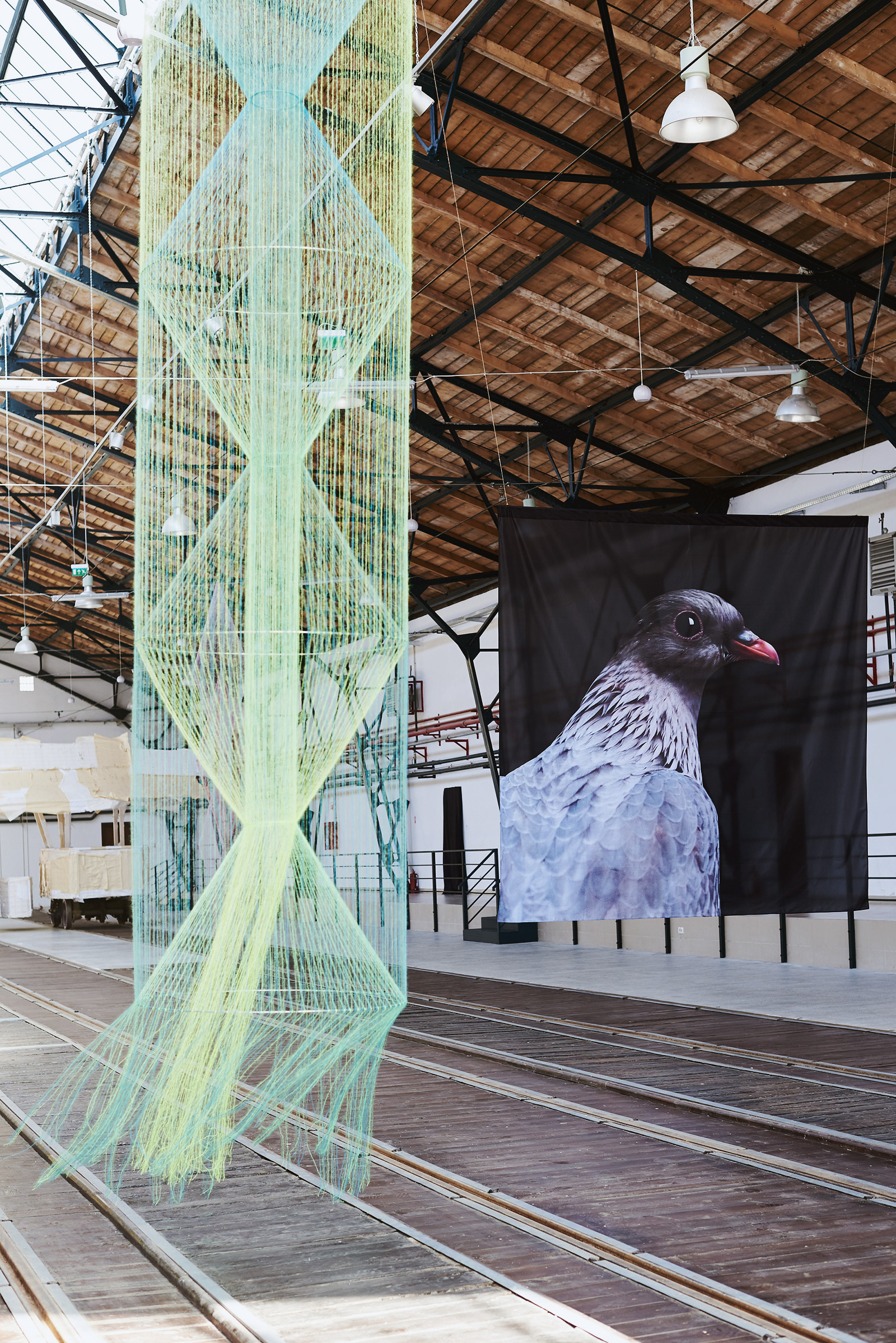
Agnieszka Polska and Bella Rune’s suspended works in the Corneliu Miklosi Public Transport Museum.
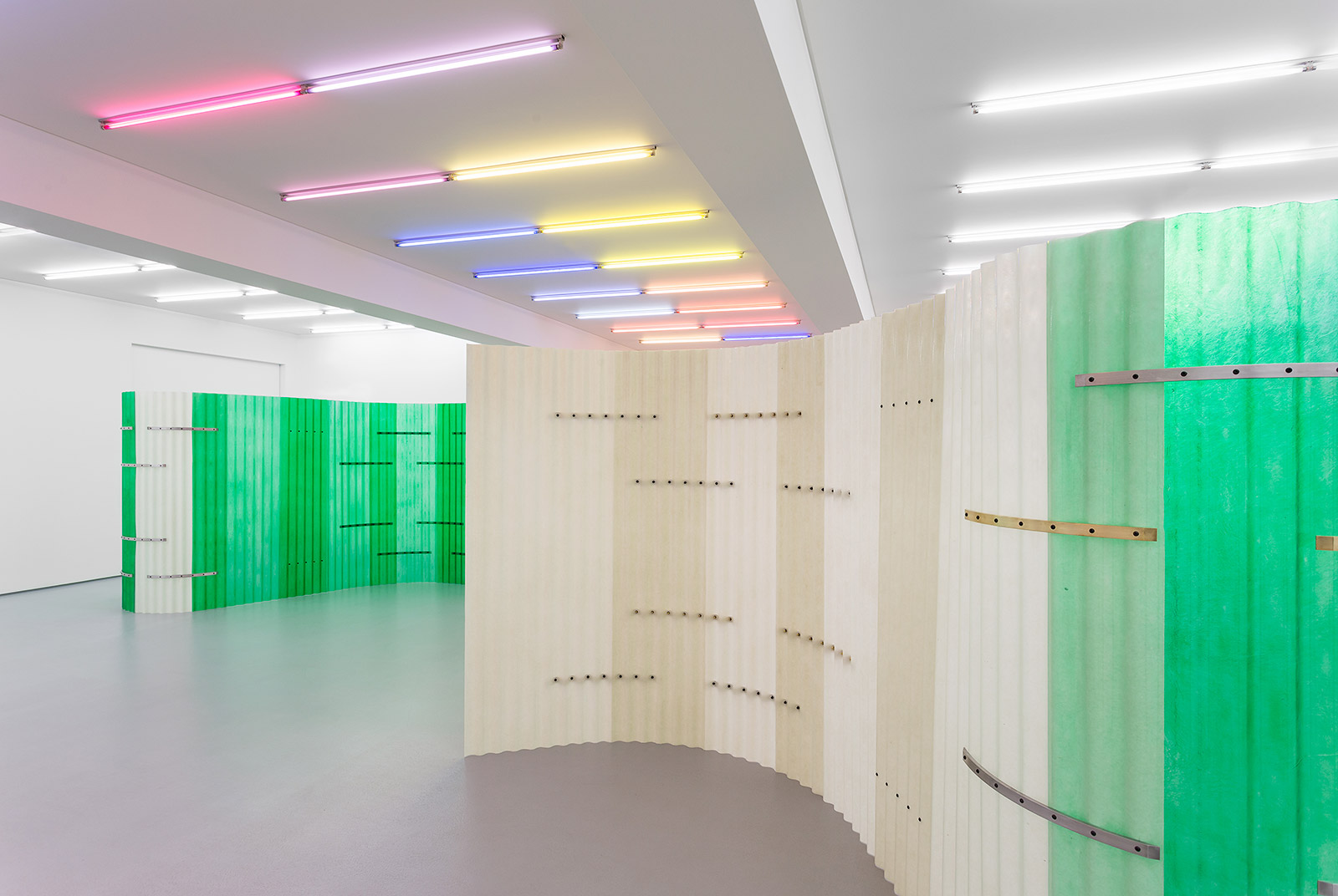
Epilogue, white, 2018; Epilogue, green, 2018; and Grazie e Arrivederci, 2018, by Céline Condorelli, installation view at Vera Cortês Gallery, Lisbon.

Installation view of Michael Beutler’s ‘Moby Dick’ at Hamburger Bahnhof – Museum für Gegenwart, Berlin, 2015. © Staatliche Museen zu Berlin, Nationalgalerie.

NSA-Tapped Fiber Optic Cable Landing Site, Keawaula, Hawaii, United States, 2016, by Trevor Paglen. © The artist. Courtesy o Metro Pictures, New York, and Altman Siegel, San Francisco
INFORMATION
Art Encounters Biennial 2019, until 27 October, various locations. artencounters.ro
Receive our daily digest of inspiration, escapism and design stories from around the world direct to your inbox.
-
 Usher opens up about breakfast playlists, banana pudding and why a glass tumbler is always on his rider
Usher opens up about breakfast playlists, banana pudding and why a glass tumbler is always on his riderOn the heels of a collaboration with Baccarat, the Grammy-winning singer-songwriter breaks down his entertaining tips. 'Hosting is an expression of how you feel about your guests and also who you are.'
-
 The beauty trends that will define 2026, from ultra-niche fragrances to anti-ageing dental care
The beauty trends that will define 2026, from ultra-niche fragrances to anti-ageing dental careAs we enter the new year, we speak to experts in fragrance, skincare, aesthetics, wellness and more about the trends that will be shaping the way we look
-
 The most stylish hotel debuts of 2025
The most stylish hotel debuts of 2025A Wallpaper* edit of this year’s defining hotel openings. Design-led stays to shape your next escape
-
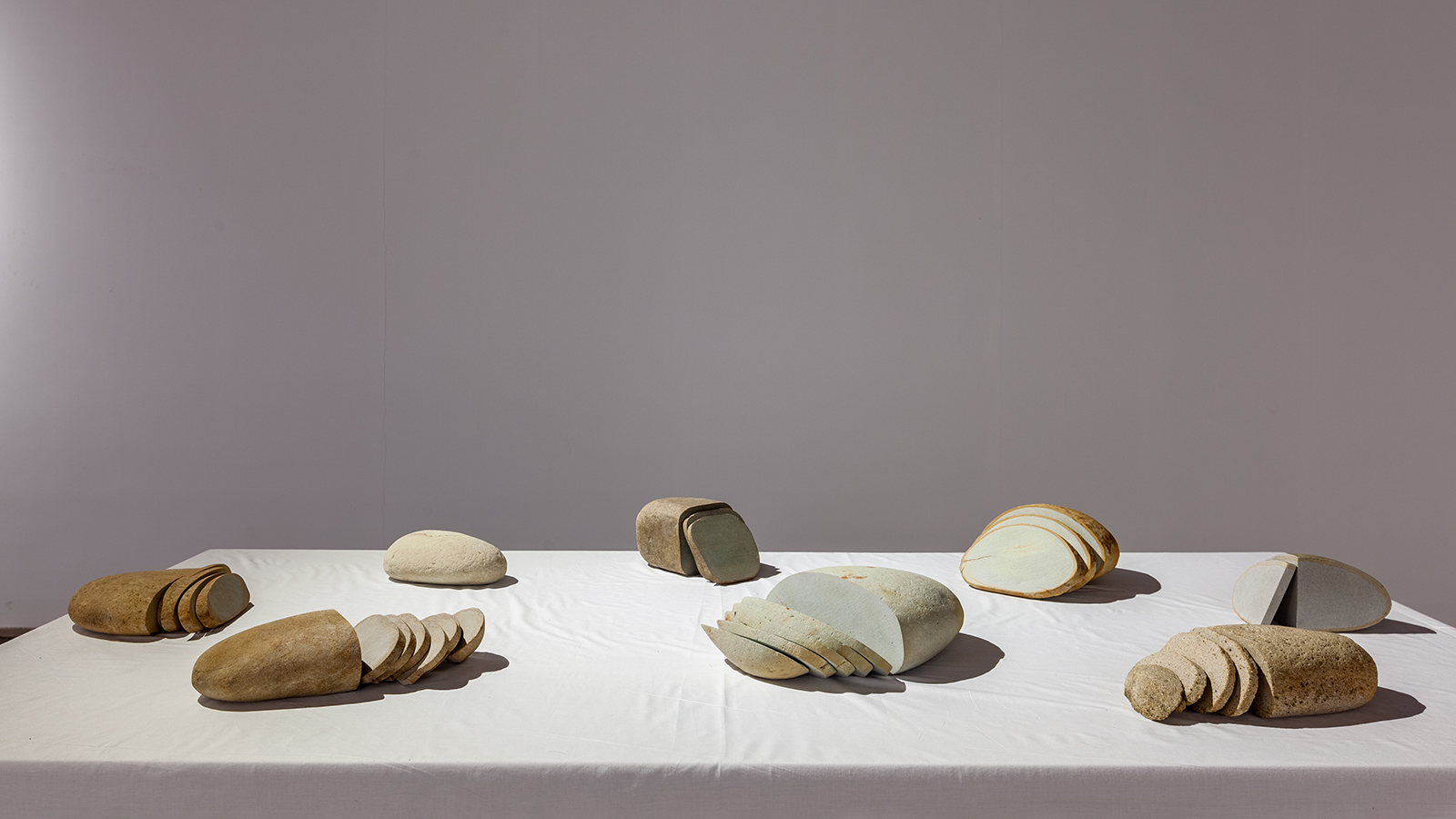 ‘In Our Veins Flow Ink and Fire’: a fervent return for India’s Kochi-Muziris Biennale
‘In Our Veins Flow Ink and Fire’: a fervent return for India’s Kochi-Muziris BiennaleIn its fifth edition, the postponed Kochi-Muziris Biennale surpasses the intersectional, collaborative essence of previous editions, writes Aastha D
-
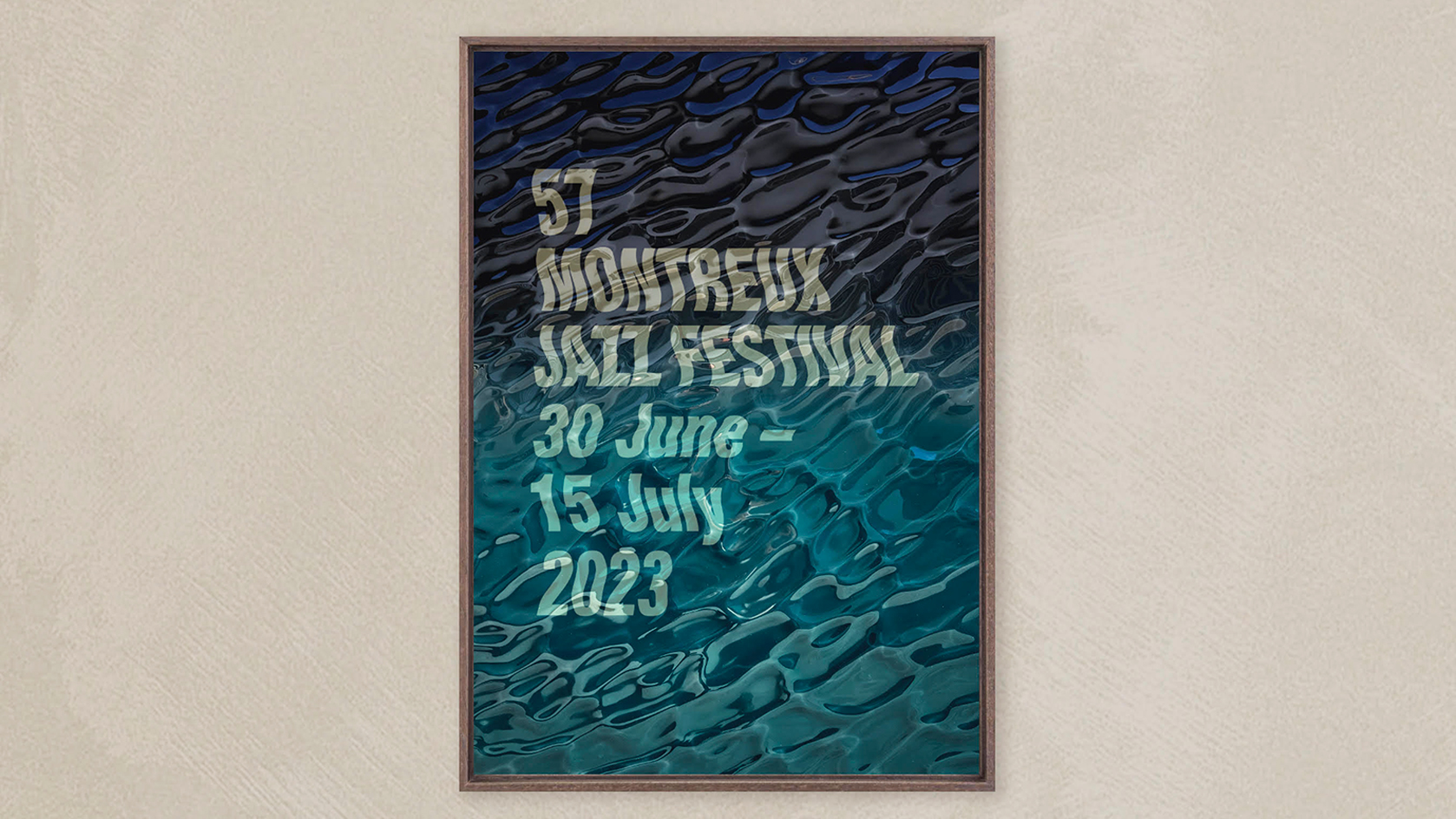 Montreux Jazz Festival posters: a visual history
Montreux Jazz Festival posters: a visual historyAs artist Guillaume Grando (SupaKitch) unveils his poster for the 57th Montreux Jazz Festival (30 June - 15 July 2023), we reflect on the most memorable designs since 1967, including from David Bowie to Andy Warhol and Camille Walala
-
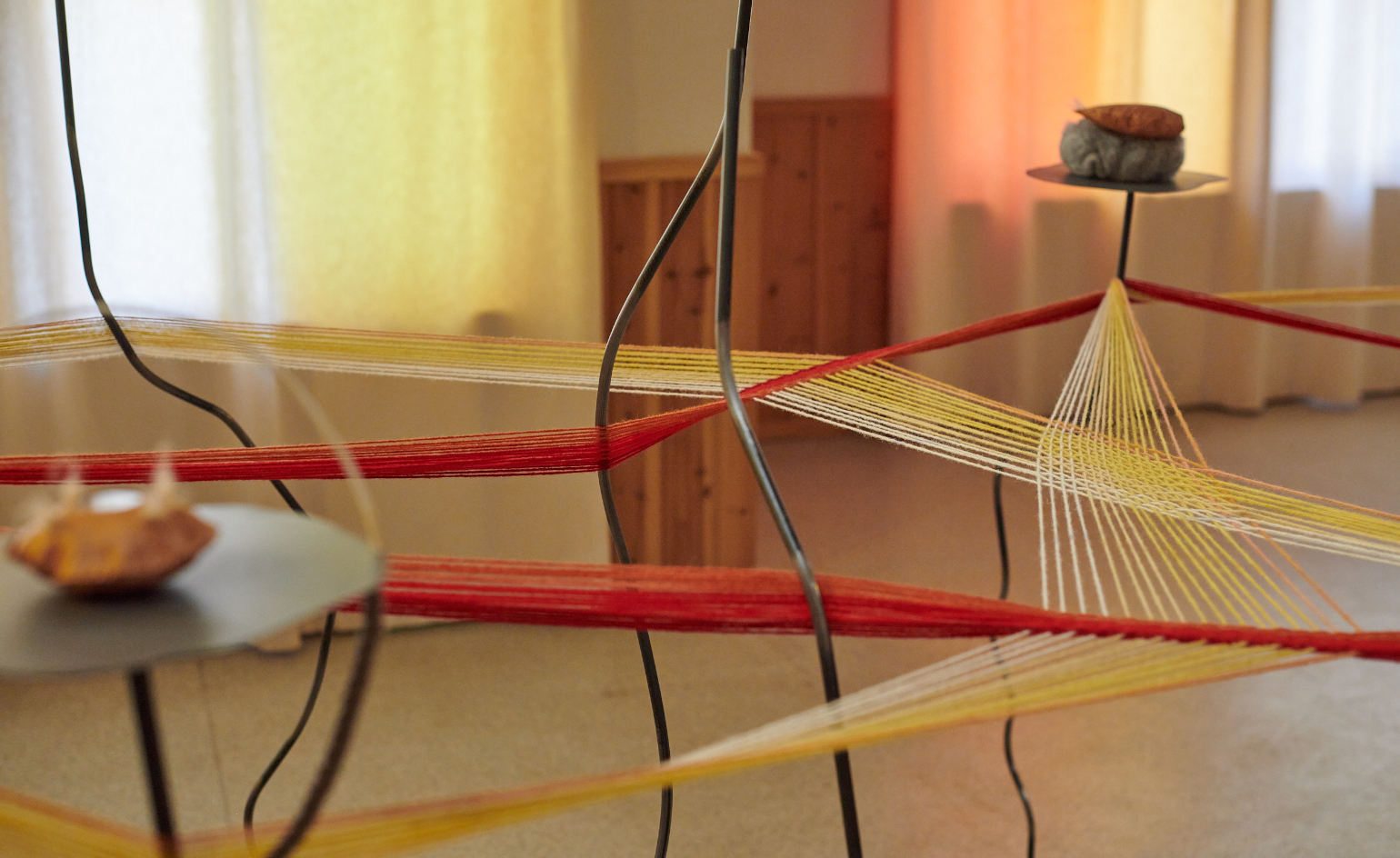 A tantalising tale of art and Gothic horror in Norway’s Arctic archipelago
A tantalising tale of art and Gothic horror in Norway’s Arctic archipelagoWe visit the 2022 edition of the Lofoten International Art Festival (LIAF) in Norway's Arctic archipelago, an edition filled with myth, politics and Gothic horror.
-
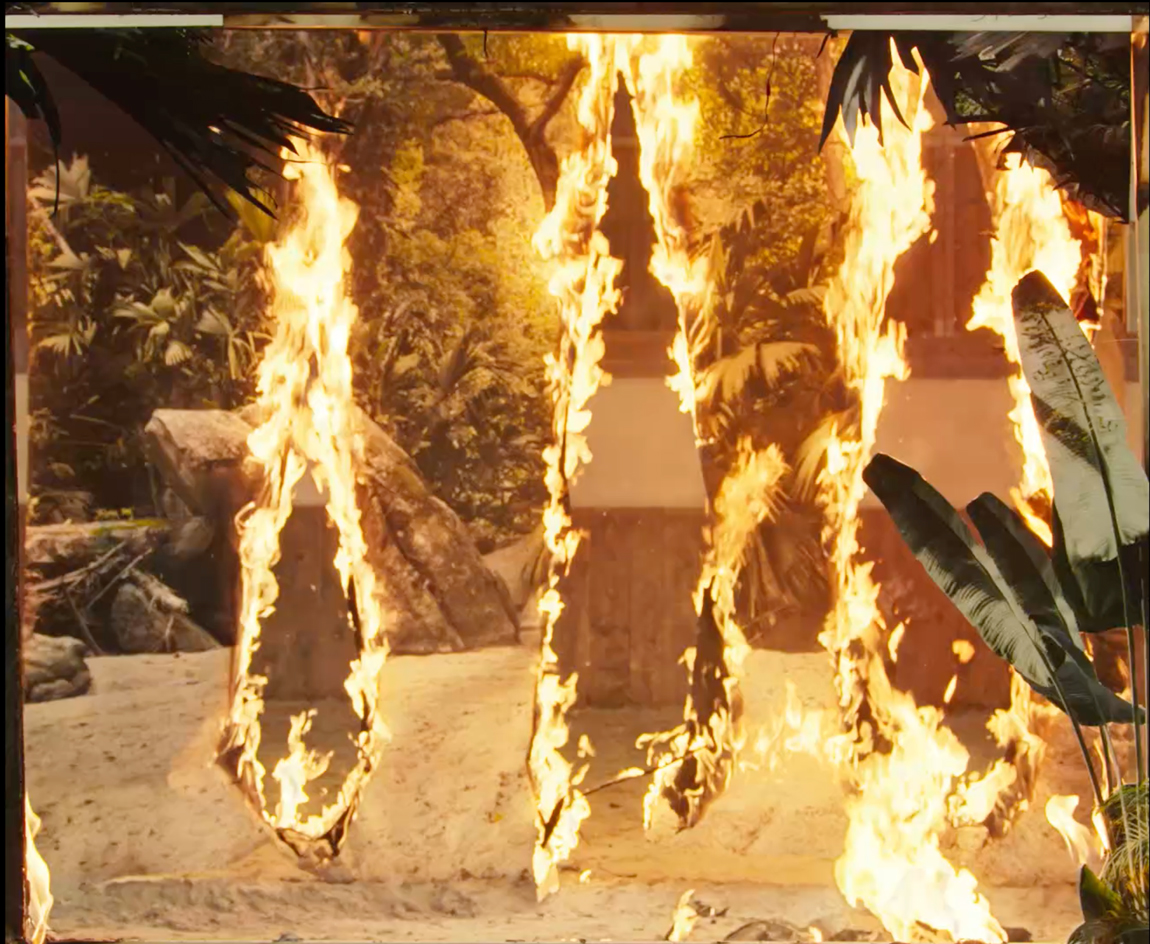 Rencontres d’Arles 2022: five photography exhibitions not to miss
Rencontres d’Arles 2022: five photography exhibitions not to missWe took a trip to Les Rencontres d’Arles, the world’s premier photography festival, to scout out the best photography exhibitions under the sun this year
-
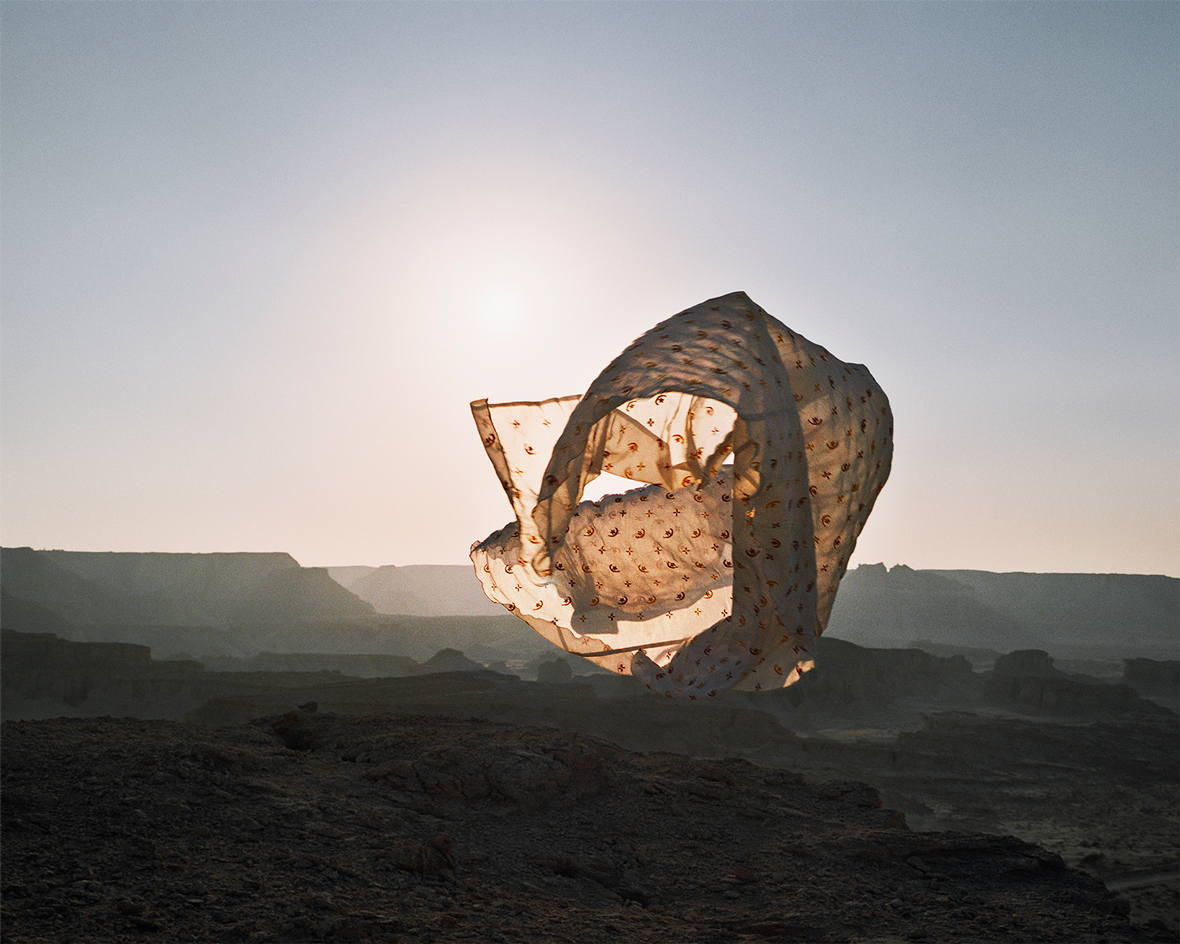 Photo 2022: a trip through past, present and potential futures in Melbourne and beyond
Photo 2022: a trip through past, present and potential futures in Melbourne and beyondThe groundbreaking Photo 2022 International Festival of Photography will return to Melbourne from 29 April – 22 May 2022. Charlotte Jansen spoke to artistic director Elias Redstone ahead of the opening
-
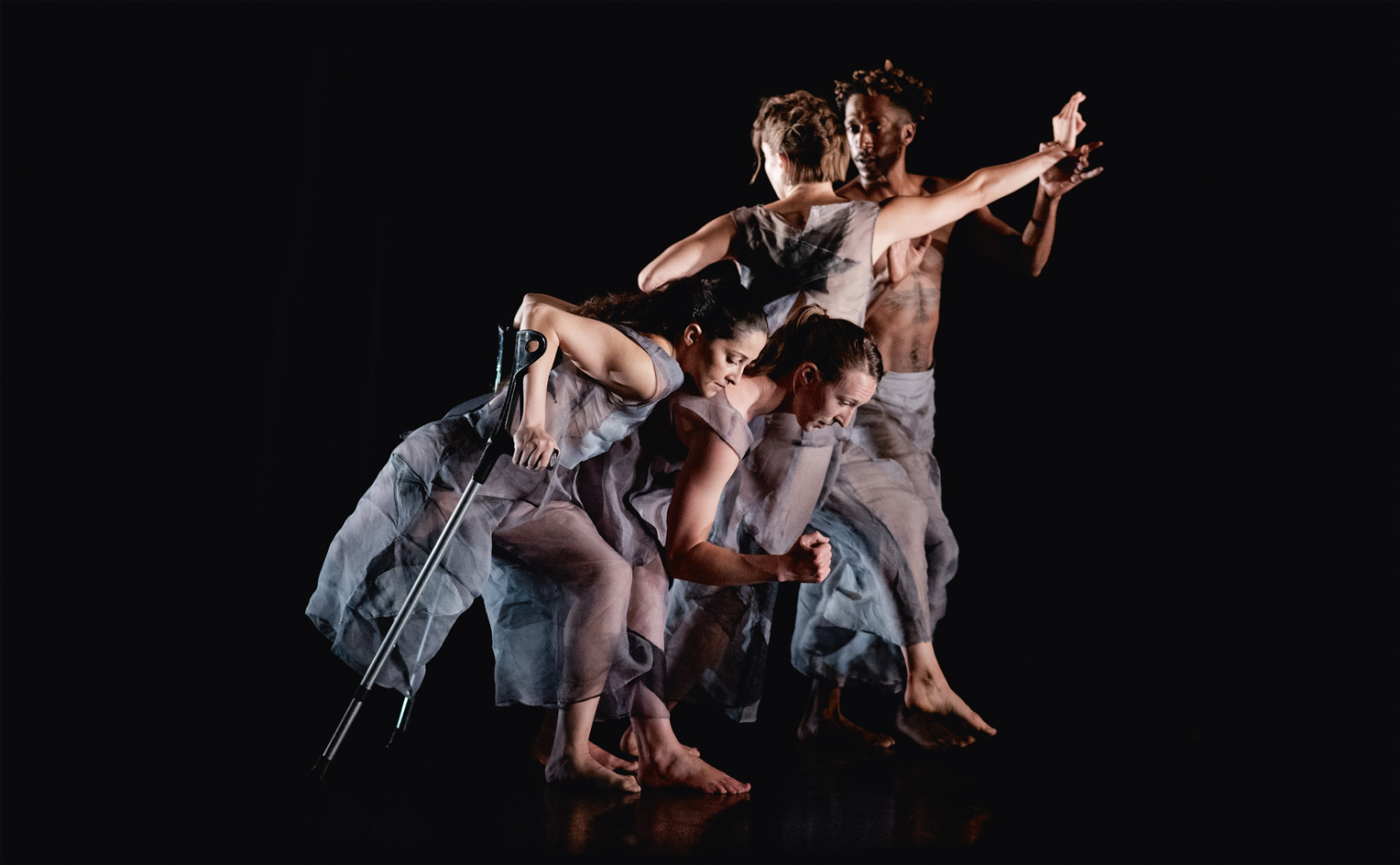 Dance Reflections: progressive new festival blends art and movement
Dance Reflections: progressive new festival blends art and movementThe inaugural edition of Dance Reflections by Van Cleef & Arpels Festival marks a bold new fixture on the performing arts calendar. In London from 9 – 23 March 2022, the initiative has been conceived in collaboration with Sadler’s Wells, the Royal Opera House and Tate Modern. Here’s what to expect
-
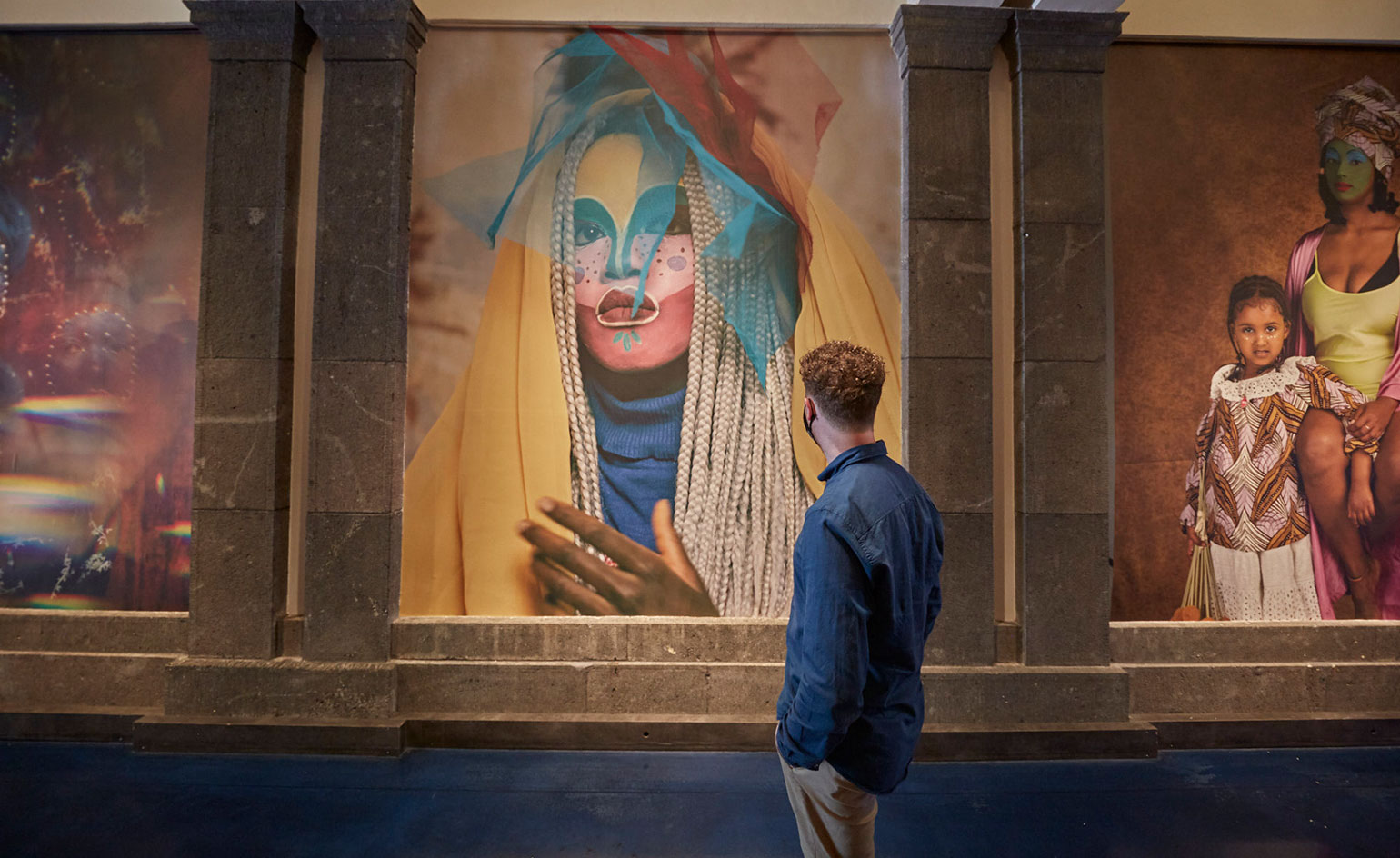 Photo 2021 explores the truth behind the image in Melbourne
Photo 2021 explores the truth behind the image in MelbourneAustralia's biggest ever photography festival showcases work from over 120 global photographers in outdoor galleries and museums around Melbourne
-
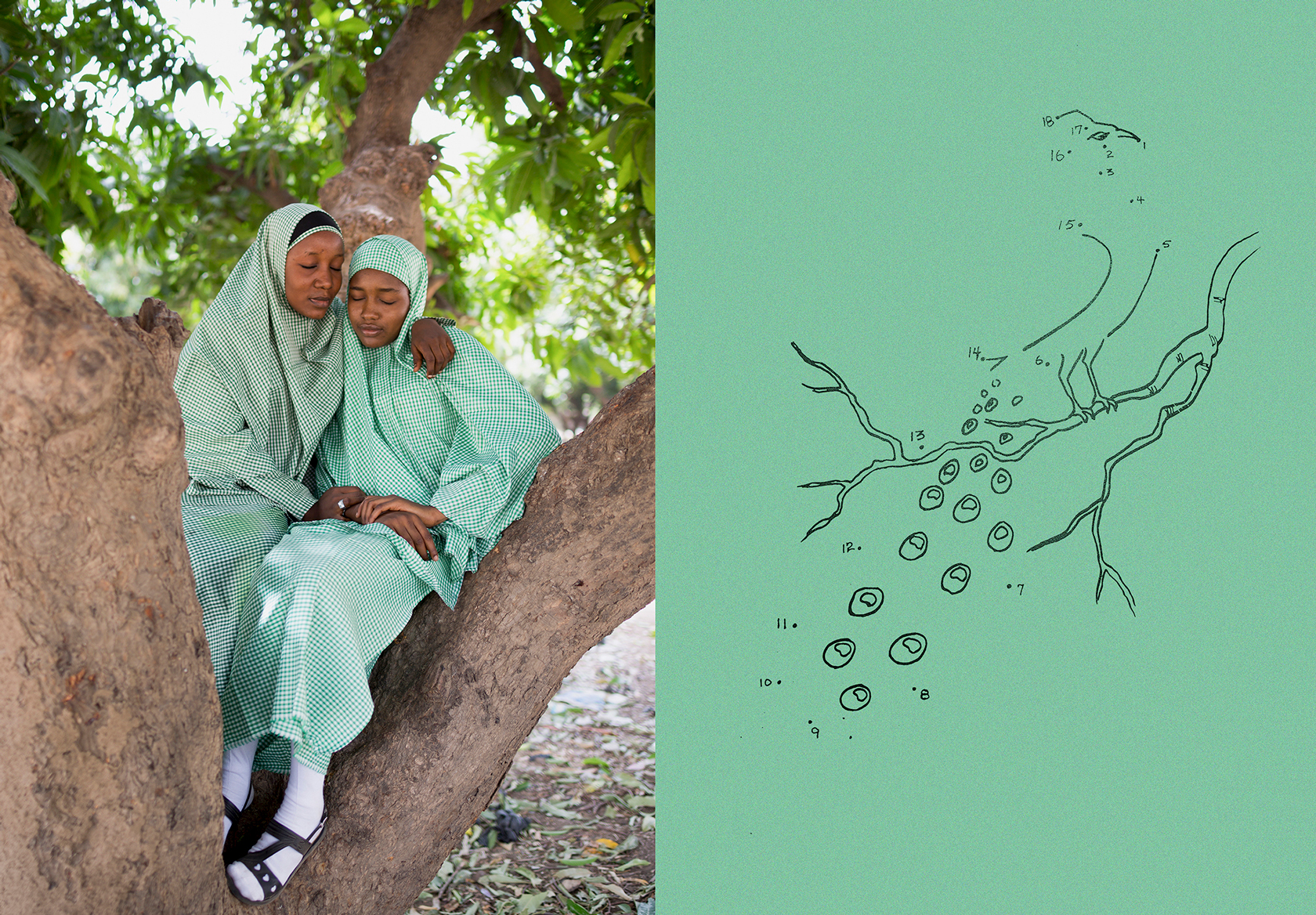 A virtual tour of Houston FotoFest: ‘Africa is everywhere'
A virtual tour of Houston FotoFest: ‘Africa is everywhere'Our digital review of the festival explores photography's historic link to colonialism and resistance, surveyed by 33 global African artists